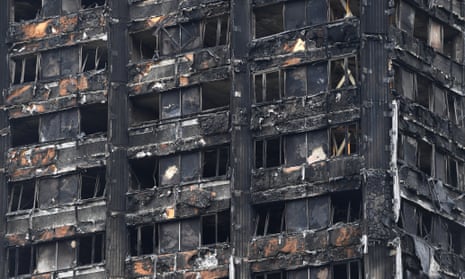The government is breaching fundamental obligations to protect its citizens’ right to life by failing to address the systemic problems that led to the Grenfell Tower tragedy, the UK’s human rights watchdog has warned.
The Equality and Human Rights Commission has written to the Department for Housing, Communities and Local Government (DHCLG) outlining its concerns about the continued use of combustible cladding in existing buildings and advising the department of its responsibilities under human rights laws to protect lives.
The watchdog has yet to receive a response from the department, which in June launched a consultation into the use of cladding, believed to be a key factor in the Grenfell disaster.
The commission said it was concerned that the consultation omits any reference to the government’s duty to protect lives under article 2 of the European convention on human rights and schedule 1 to the Human Rights Act 1998.
“This paramount duty requires the state to take appropriate steps within its power to effectively protect the lives of individuals and groups in situations where there is a known real risk to life, or where the authorities ought to have known that,” the commision said in its response to the consultation, shared with the Observer.
The response continues: “Unfortunately, over a year after the catastrophic loss of more than 70 residents’ lives, many of the very systemic failings that led to the Grenfell Tower fire still exist now, giving rise, in our view, to an ongoing violation of article 2 ECHR/HRA by the state.”
Following the Grenfell Tower fire, which claimed 72 lives in June last year, additional measures, such as employing fire wardens and installing sprinklers, have been put in place in many residential high-rise buildings that have been built using combustible cladding.
But the commission says it is concerned that leaseholders are being held to pay for the costs of removing and replacing the cladding because freeholders or developers are not prepared to foot the cost.
“Combustible cladding is still present in many other buildings as well, including schools, leisure centres and hospitals,” the commission warns. “Estimates of the number of buildings affected run into the thousands, with the estimated costs of replacing combustible materials running into many millions of pounds. All those costs stem from the state’s failure to provide a building construction and fire safety system that is fit for purpose.”
A spokesman for the DHCLG said it would consider the commission’s submission along with other consultation responses. “The cladding believed to have been used on Grenfell Tower was unlawful under existing building regulations,” the spokesman said. “It should not have been used. Work is now under way on 70% of social housing with unsafe cladding.”
